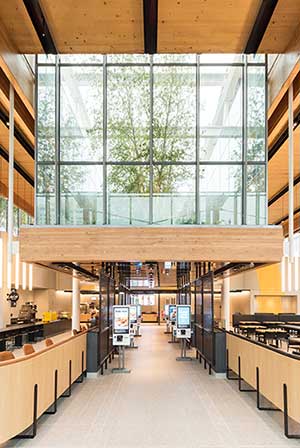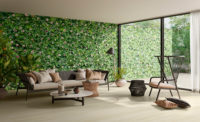Having caused a stir last year with a minimalist, glass-box building for McDonald’s in Chicago, architect Carol Ross Barney and the restaurant chain’s senior director of global design and development, Maximiliano Carmona, possess strong insights on the future of store design. As online sales continue growing faster than those of physical brick-and-mortar locations, Carmona is planning more design collaborations like the one he completed with Ross Barney Architects. RECORD editor Kelly Beamon asked both architects why.
Your redesign for the Chicago Mcdonald’s seems to signal a trend.
Carol Ross Barney: Yes. McDonald’s recognizes that high-concept design is a good way to tell people the direction the brand is going.
Do mass-market retailers need to embrace a high-end aesthetic?
Carol Ross Barney: Retail—especially this type, fast food—is under a lot of pressure to sell an experience. Customers can sit at home and buy almost anything through Amazon and Uber delivery. The future of physical retail environments depends on offering an enhanced experience. Design is a big part of that.

When did McDonald’s start commissioning this type of conceptual design?
Maximiliano Carmona: For the last 18 months, we’ve been hiring good retail designers across the world—Australia, Amsterdam, Hong Kong and in the United States. The way that’s manifesting lately is in the interiors.
McDonald’s is a brand watched by other retailers. Do you see this move toward more conceptual store design influencing other mid-market retail chains?
Maximiliano Carmona: Trends have a shelf life, so we try not to get hung up on them. But I’d say retailers are adapting by offering their services across many popular platforms. The customer is creating the new retail experience.
In other words, customers’ online shopping habits are creating the experience, the same habits that Ross Barney says inspired her glass- and kiosk-filled concept. Is an understanding of those habits a requirement for the firms you consider working with?
Maximiliano Carmona: Yes. That, and having a significant, innovative portfolio, not being too large (less than 100 employees), and, possibly but not necessarily, a strong retail design track record.
This story was featured in Material World, Architectural Record’s products-focused newsletter. Subscribe today!






Post a comment to this article
Report Abusive Comment